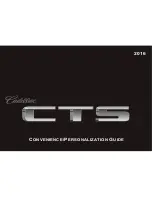
R
ABS (Anti-lock Braking System)
R
BAS (Brake Assist System)
R
BAS PLUS (Brake Assist System Plus*)
R
Adaptive brake lamps
R
ESP
®
(Electronic Stability Program)
R
EBD (electronic brake force distribution)
R
ADAPTIVE BRAKE
R
PRE-SAFE
®
Brake
R
STEER CONTROL
Important safety notes
If you fail to adapt your driving style, the driv-
ing safety systems can neither reduce the risk
of accident nor override the laws of physics.
Driving safety systems are merely aids
designed to assist driving. You are responsi-
ble for the distance to the vehicle in front, for
vehicle speed and for braking in good time.
Always adapt your driving style to suit the
prevailing road and weather conditions, as
well as the traffic conditions and maintain a
safe distance from the vehicle in front. Drive
carefully.
i
Please note that the driving safety sys-
tems described only work as effectively as
possible when there is adequate contact
between the tyres and the road surface.
Pay particular attention to the information
regarding tyres, recommended minimum
tyre tread depths etc. in the "Wheels and
tyres" section (
Y
page 356).
In wintry driving conditions, always use
winter tyres (M+S tyres) and if necessary,
snow chains. Only in this way will the driv-
ing safety systems described in this section
work as effectively as possible.
ABS (Anti-lock Braking System)
Important safety notes
i
Observe the "Important safety notes" sec-
tion (
Y
page 61).
ABS regulates brake pressure in such a way
that the wheels do not lock when you brake.
This allows you to continue steering the vehi-
cle when braking.
ABS works from a speed of about 8 km/h
upwards, regardless of road-surface condi-
tions. ABS works on slippery surfaces, even
when you only brake gently.
G
WARNING
If ABS is faulty, the wheels could lock when
braking. This limits the steerability of the vehi-
cle when braking and the braking distance
may increase.
If ABS is deactivated due to a malfunction,
then BAS and ESP are also deactivated. There
is an increased risk of your vehicle skidding in
certain situations.
You should always adapt your driving style to
suit the prevailing road and weather condi-
tions.
Braking
If ABS intervenes when braking, you will feel
a pulsing in the brake pedal.
X
If ABS intervenes: continue to depress the
brake pedal with force until the braking sit-
uation is over.
X
To make a full brake application:
depress the brake pedal with full force.
The pulsating brake pedal can be an indica-
tion of hazardous road conditions and func-
tions as a reminder to take extra care while
driving.
G
WARNING
Do not depress the brake pedal several times
in quick succession (pumping). Pumping the
brake pedal reduces the braking effect. You
might otherwise not be able to stop the vehi-
cle in time and could cause an accident.
Depress the brake pedal firmly and smoothly.
Driving safety systems
61
Safet
y
Z
Содержание CLS 2011
Страница 2: ......
Страница 3: ......
Страница 5: ......
Страница 29: ...26...
Страница 41: ...38...
Страница 93: ...90...
Страница 107: ...104...
Страница 297: ...294...
Страница 298: ...Useful information 296 Loading guidelines 296 Stowage areas 296 Features 306 295 Stowing and features...
Страница 320: ...Useful information 318 Engine compartment 318 Maintenance 322 Care 324 317 Maintenance and care...
Страница 371: ...368...
Страница 387: ...384...
Страница 388: ......
Страница 389: ......
















































